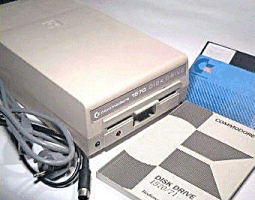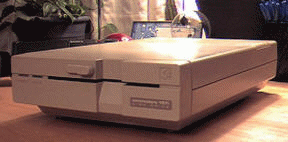





Commodore also carefully considered the backwards compatibility they promised with the Commodore 128 computer. If the Commodore 128 was to be "3 Computers in 1", could it's disk drive be any less? So, in addition to the high speed/high capacity "1571 mode", and the variable format "MFM" capabilities mentioned above, the Commodore 1571 was capable of a Commodore 1541 emulation mode, allowing it to load and run all the old Commodore 64 software.
Like all Commodore disk drives, these drives were "smart" devices. They included their own processor, their own memory, and their own disk operating system. In fact, the relationship between a Commodore computer and it's disk drive resembles more closely two computers on a network than a typical Computer->peripheral relationship. The peripherals on the Commodore serial "network" each had a unique identifying "Unit" number, typically ranging from 8-30. This number identified which physical device was being accessed. When a disk drive contained more than one floppy drive (like the 1572 for instance), you also had to refer to the particular "drive" number you wanted (typically 0 or 1). Single-floppy drives, like the ones on this page, still had to deal with the legacy of the old IEEE-488 dual drives and the version of CBM DOS with which they were compatible by referring to their single floppy as "drive 0".
Model : 1570 Type : 5.25" Floppy Disk Media : Single Sided, Double Density Capacity : 170K per disk Interface: CBM Serial Bus Dos : CBM DOS 3.0 Notes : GCR "burst" only, "1541" emulation, Demo disk
Model : 1571 Type : 5.25" Floppy Disk Media : Double Sided, Double Density Capacity : 360K per disk Interface: CBM Serial Bus Dos : CBM DOS 3.0 Notes : MFM, GCR "burst", GCR "1541" emulation, Demo disk
Click here to return to the main pictures page
If you find anything in here you have questions or comments about, feel
free to leave me email right here.
To return to my home page, click here.